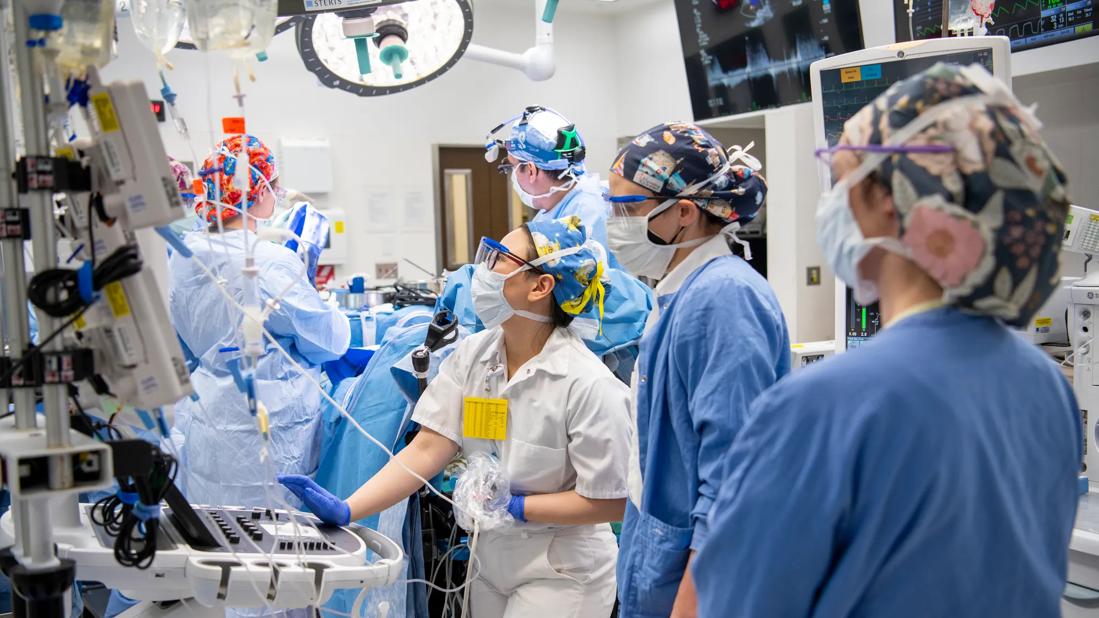Striving to reinvent teamwork and professional development at Cleveland Clinic

By: Gina Cronin FACHE, Chief Talent Officer at Cleveland Clinic
Advertisement
Cleveland Clinic is a non-profit academic medical center. Advertising on our site helps support our mission. We do not endorse non-Cleveland Clinic products or services. Policy
Healthcare is reliant on high-performing teams to achieve everything from patient safety to quality outcomes. Our CEO at Cleveland Clinic, Tomislav Mihaljevic, MD, advocates the ‘team of teams’ approach, with a constellation of teams throughout the organization coming together to achieve specific goals. These teams range from unit-based caregivers performing daily huddles with patients and their families to formal committees within the healthcare organization’s institutes.
While teams are critical to the success of a healthcare system, they are often a forgotten audience when it comes to professional development. A lot of ‘talk’ occurs around team building, but organizations tend to devote most of their resources to developing individual leaders and individual contributors and neglect how to powerfully build teams.
At Cleveland Clinic’s Mandel Global Leadership & Learning Institute, we’ve launched a team development initiative to promote the use of research-based interventions providing teams with resources to drive outcomes and support engaged and effective caregivers. We are striving to create teams that don’t just function smoothly on their own, but across the enterprise with other teams. We want to build dream teams.
As a leading research institution, utilizing evidence-based interventions is imperative. The framework for our team development program is adapted from “Teams That Work” by Scott Tannenbaum and Eduardo Salas, which cites seven drivers of team effectiveness:
Advertisement
To ensure alignment with Cleveland Clinic’s vision and mission, we mapped these seven drivers with our six values: quality & safety, empathy, teamwork, integrity, engagement and innovation.
We are striving to reinvent professional development at Cleveland Clinic to focus on both leaders and teams. If we advocate for a team-based approach in healthcare, then the dual focus is imperative. Cleveland Clinic is currently creating and implementing several components of our team development program, including the following:
A Standardized Approach – Team development training, programs and interventions will be standardized across the enterprise.
Tailored Consulting – Although our overall approach will be standardized, we will tailor our offerings to individual teams based on their level and identified needs. Cleveland Clinic offers an array of training, including a four-month leadership experience program, lunch-and-learns, retreats, leader-led discussions and virtual instructor-led training on topics ranging from creating healthy teams to having more productive conversations.
Team Coaching – Organizational development professionals will provide team coaching, as well as one-on-one coaching to leaders. They will attend team meetings, observe interactions and provide personalized coaching.
Self-service Resources – In addition to training programs, we will offer a variety of modular and self-service resources, such as podcasts, LinkedIn Learning courses, blogs and information on Connect Today, an online caregiver community that supports learning and development.
Advertisement
Validated Assessments – We are creating tools to measure the health of our teams. The measurements will be centered around culture. There are several metrics we can use to gauge success, including Press Ganey engagement scores and the Hospital Consumer Assessment of Healthcare Providers and Systems’ survey question, “How well did the staff work together to care for you?
Healthy teams are the backbone of an organization. They create your culture. I encourage healthcare systems to not simply focus on individuals, but to broaden their lens to include team development. Support your teams and help them flourish.
Advertisement
Advertisement

Annual event galvanizes leaders and inspires excellence

Expert tips from Cleveland Clinic’s Chief Legal Officer

Groups move the metrics in environmental services and sterile processing

Initiative generates new ideas for improving efficiency, eliminating waste

A new tool offers micro-education for improving meeting productivity

Well-being initiative aims to prevent chronic disease

Certified coaches help hospital teams build trust, improve communication

Peer collaboration, flexibility amplify learning